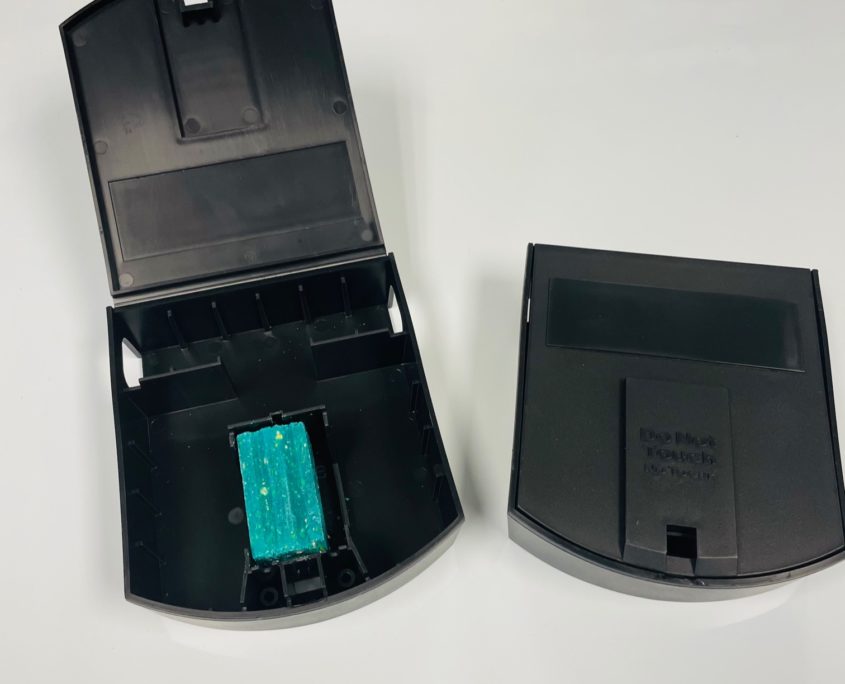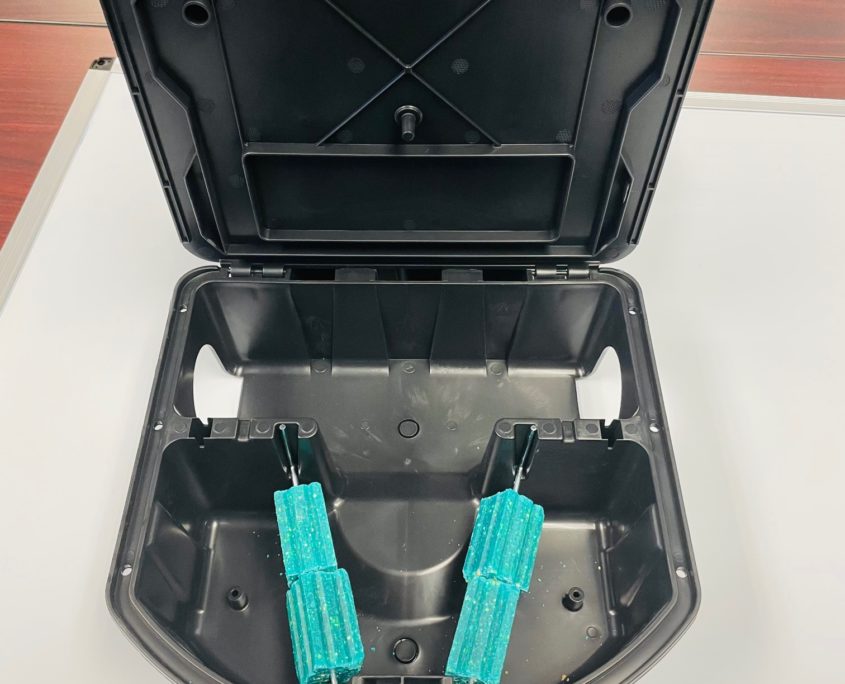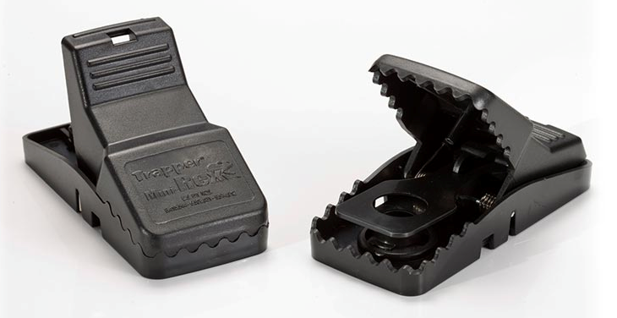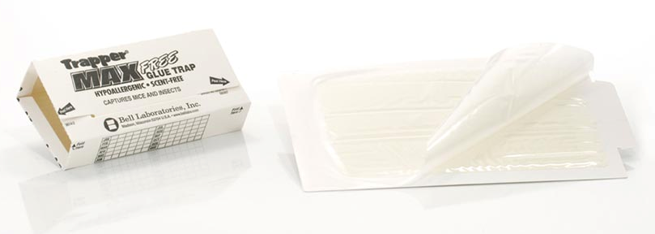Rodents
B&G Mouse stations are small and square shaped, with entry holes on both end, and holds 1oz of bait blocks. It fits flush against a wall where mice travel. The B&G Mouse station locks automatically when closed and needs a special 2-prong key to open. Can be used in residential, commercial, industrial buildings, indoors and outdoors. Place station near baseboards, corners, along walls, or in spaces where rodents are likely to travel.

B&G Large Café Stations can be used to control Rats and also to control Mice on exterior of home or structure. These large stations are versatile and offer multiple options to fit the needs of our customer. The large stations can either hold 2 T-Rex snap traps, up to 8 rodent bait blocks, or a combo of both methods.

Snap Traps: T-Rex snap traps have unique interlocking teeth that make it virtually impossible for Mice or Rats to escape. Snap traps can be placed directly in a B&G Large Café Bait Station, or tied to pipes & beams that Rats/Mice may use as highways. Can use these traps in Residential, Commercial, industrial Buildings, Indoors, and Outdoors. Place traps near baseboards, corners, along walls, or in spaces where rodents are likely to travel. Can be placed alone or back-to-back in pairs along rat pathways, or wired above ground to pipes and rafters. Should be placed in areas not readily accessible to pets and children to prevent tampering.

Glue Boards are used as a tool for trapping and monitoring rodent activity. Glue boards can be used in food plants, kitchens, restaurants, food processing plants, hospitals, residences, and other sensitive areas where the use of poison is prohibited or discouraged. Place the traps where the floor meets the wall in areas where rodents travel, as indicated by rodent signs like hair, droppings, or damage. The rodent will come into contact with the glue, and it becomes entangled and unable to free itself. The rodent will eventually suffocate to death. We should NOT use glue boards for Rats as they will chew apart and free itself, will need a stronger trap. Glue boards are typically used as a monitoring tool, not as a method to control and eradicate rodent activity.

1) Park truck on curb/street in front of customers home
2) Open Pest Pac, click Time In
3) Grab a pair of booties(don’t put on yet)
4) Walk up to front door by using the sidewalk(do not walk in yard)
5) Ring doorbell and step back so customer has room to open the door
6) Introduce yourself with “Either Good Morning or Good Afternoon, I’m “your name” with Environmental Pest Management”, all while making eye contact with customer and give a firm hand shake
7) Ask customer if you can enter their home, once they say yes place booties on right before you step into the home
8) Ask customer about their pest issue, let them express their concerns, once they are done say “I can certainly help take care of your pest issues”
09) Start asking probing questions such as where do you see the activity, how long have you been dealing with the issue, have you had the issue in the past, have you used any of your own products, how many are you seeing, etc.
- Once you have enough information with the pest issue you are dealing with, ask if you can start your inspection of the inside of their home. Start with the areas of concern first, move to other areas of the house for preventive measures (basement, kitchen, bathrooms, interior garage, entry points)
- When inspecting in basement/crawl spaces, inspect up high around sill plate. Locate insulation that has rodent burrow holes, & or urine staining. Make sure to place any insulation back that you remove. Inspections of attic or any treatments in the attic are to be done on specific request only
- Once the interior inspection is completed, move to the exterior (remember to remove booties before going outside)
- Exterior inspection will need to be around foundation of home, looking for any signs of possible entry points, burrow holes into foundation, & areas that may provide rodent harborage
- If rodents are going into the attic, technician needs to look for areas where mice can be climbing up home & accessing attic areas
- During rodent service if any dead mice are seen by technician they are to be removed. Always make sure to be wearing gloves & dispose of mice in some sort of trash bag
- Let customer know all findings of your inspection. Come up with a treatment plan that customer is comfortable with. Give customer a rough time frame of how long it’ll take to get rid of the pest issue. Let customer know you the price of the treatment and that you’ll be collecting payment once the treatment is completed
- Place stations/traps where activity is present and or droppings are present. Technician should try to focus on placing between 2-4 stations/traps per room depending on infestation & room size. We can also place snap traps or glue boards in areas of activity, only if homeowner requests or approves us placing trap. If placing a snap trap or glue board homeowner needs to be made aware that they are responsible to throw away any caught rodent in between services. We can remove traps upon follow up service if requested by homeowner. When placing stations, snap traps, glue boards, or exterior stations make sure to document all areas of placement. If technician feels that exterior stations are needed, ALWAYS get approval from homeowner as these will be an extra cost
- Following completion of treatment: Service notes to homeowner should be where you placed the rodent stations & any areas that may need sealed.
- Inform customer he/she will need to contact EPM office following initial rodent service to schedule follow up service
- Return to truck, complete Pest Pac
- Press completed service on Pest Pac, head to next stop on schedule
